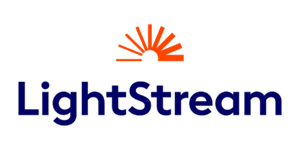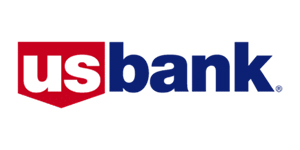Compare the Best Personal Loans With No Origination Fees
The Best Personal Loans With No Origination Fees
- LightStream: Our Top Pick
- SoFi: Best Customer Service
- PenFed: Best for Small Loans
- Discover: Best for Low Rates
- U.S. Bank: Best for Bank Switchers
- Wells Fargo: Best for In-Person Service
What Are Origination Fees?
Origination fees are fees lenders charge to borrowers for the application, processing and originating of your personal loan. They are typically an upfront cost that’s deducted from the total amount you want to borrow. For instance, if you have a 5% origination fee on a $10,000 loan, $500 will be deducted from the amount to be disbursed into your account.
Origination fees range anywhere from 0% to 10%. The total origination fee amount you’re charged depends on your credit score, credit history, how much you want to borrow and other qualifying factors.
When Should I Consider a Personal Loan?
While a personal loan might be a solid option, it’s not always the best choice for everyone. Consider a personal loan if:
- You can comfortably afford making payments on your new loan and it fits within your current budget.
- You’ve exhausted other ways to cover those costs and needs before borrowing.
- You have decent credit to qualify for a loan or a trustworthy cosigner to vouch for you.
- You want the predictability of fixed interest rates and making the same payments every month.
You may want to consider alternative options if:
- New payments would be difficult to manage or add into your budget.
- You don’t qualify for good interest rates or terms.
- You don’t want to take out another loan or line of credit, which can temporarily cause your credit score to drop.
Key Considerations When Choosing a Lender
There’s no one-size-fits-all personal loan lender. Carefully weigh your specific needs, your unique financial situation and these other considerations before choosing a lender.
- Credit score: Every lender has different credit score requirements, including those that don’t charge origination fees. It’s important to know yours before you complete an application. You can also pull your credit report for free from the three credit bureaus at AnnualCreditReport.com.
- Getting prequalified: If potential lenders offer prequalification, take advantage of it. This will let you know if a lender is likely to give you a loan based on information you input yourself.
- Loan terms: Look to see what lenders offer you based on repayment terms, interest rates, fees (including origination fees) and other factors. It’ll help you narrow down your options.
Since there are no minimum standards that all lenders need to meet, consider a few different lenders before choosing the one that works best for you.
The Bottom Line
There’s no shortage of personal loan lenders out there, including plenty that don’t charge origination fees. Before you complete an application, look for lenders with the fewest fees, lowest interest rates and repayment terms that are in line with what you can afford.
Frequently Asked Questions About Personal Loans With No Origination Fees
Look for lenders that don’t charge origination fees. Some lenders charge these fees but may target borrowers with bad or fair credit. Other lenders may not charge this fee but require borrowers to have good or excellent credit.
If you get hit with an origination fee, the amount you pay is usually set by your lender based on your credit score, credit history, how much you want to borrow and your repayment terms. Almost every fee a lender charges is negotiable, so it never hurts to ask your potential lender about lowering or waiving origination fees or other fees you might face.
Any time you complete a loan application, your credit score will temporarily take a dip. That’s because hard credit inquiries affect your credit report. But you should see your score rebound after a few months of on-time payments. If you end up closing accounts, your credit utilization could increase, which may also cause your score to drop.
How much you borrow with a personal loan depends on the lender. Some lenders might approve you for loans up to $100,000 while others may only allow up to $25,000. Check which lenders offer loans in the range you need before completing an application.
Methodology: Our System for Ranking the Best Personal Loans
Our team put together a comprehensive 100-point rating system to evaluate personal loan companies based on factors that mean the most to you, the potential borrower. We then gathered scores of data points from across the industry, analyzing disclosures, licensing documents, sample loan agreements, marketing materials and websites for more than two dozen of the most prominent personal loan companies in the United States.
Our rating system takes into account four broad categories. Here’s a brief breakdown of each one.
- Affordability (35%): We gauge how expensive each company’s loans are to pay back, taking into account both interest rates and fees. The highest-scoring lenders will have low minimum and maximum annual percentage rates (APRs) and low or no origination fees.
- Loan features (35%): This category measures the breadth of loan terms available to prospective customers. The most points go to lenders with a wide range of loan lengths, small minimum loans, large maximum loans, and fast funding.
- Customer experience (20%): We review each company’s application, prequalification and customer service policies and procedures to create this category score. The best companies will have simple online applications and multiple ways for customers to get their problems solved.
- Company reputation (10%): Our team analyzes each company’s Better Business Bureau file, customer reviews and any outstanding regulatory actions. The most points will go to companies with an A+ rating with the BBB, a track record of addressing customer complaints and no active regulatory orders.
This rating system is intended to give readers a comprehensive overview of each personal loan company. However, our top-rated lenders may not be the best fit for all borrowers. To learn more, you can read our full personal loans methodology.
If you have questions about this page, please reach out to our editors at editors@marketwatchguides.com.



















